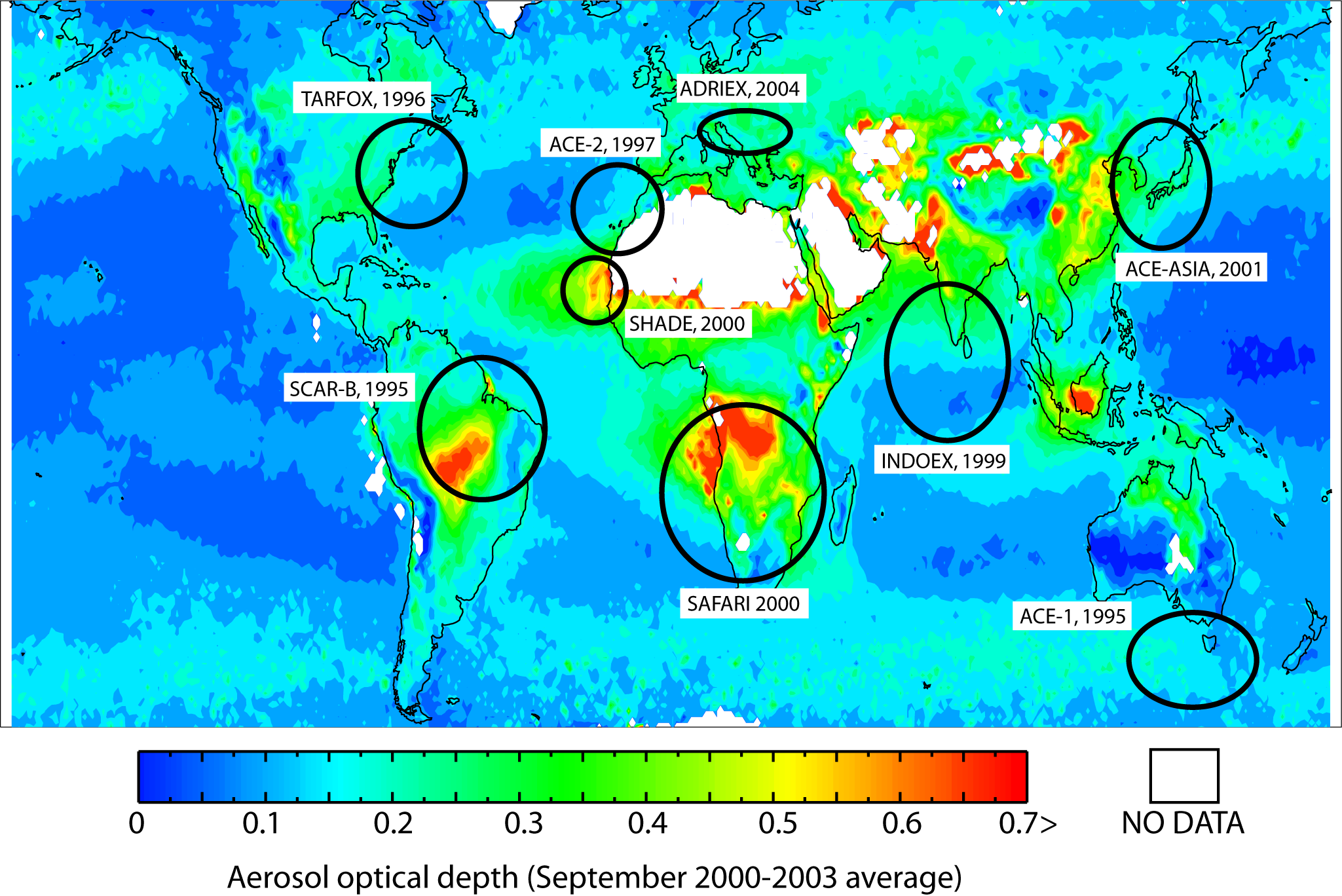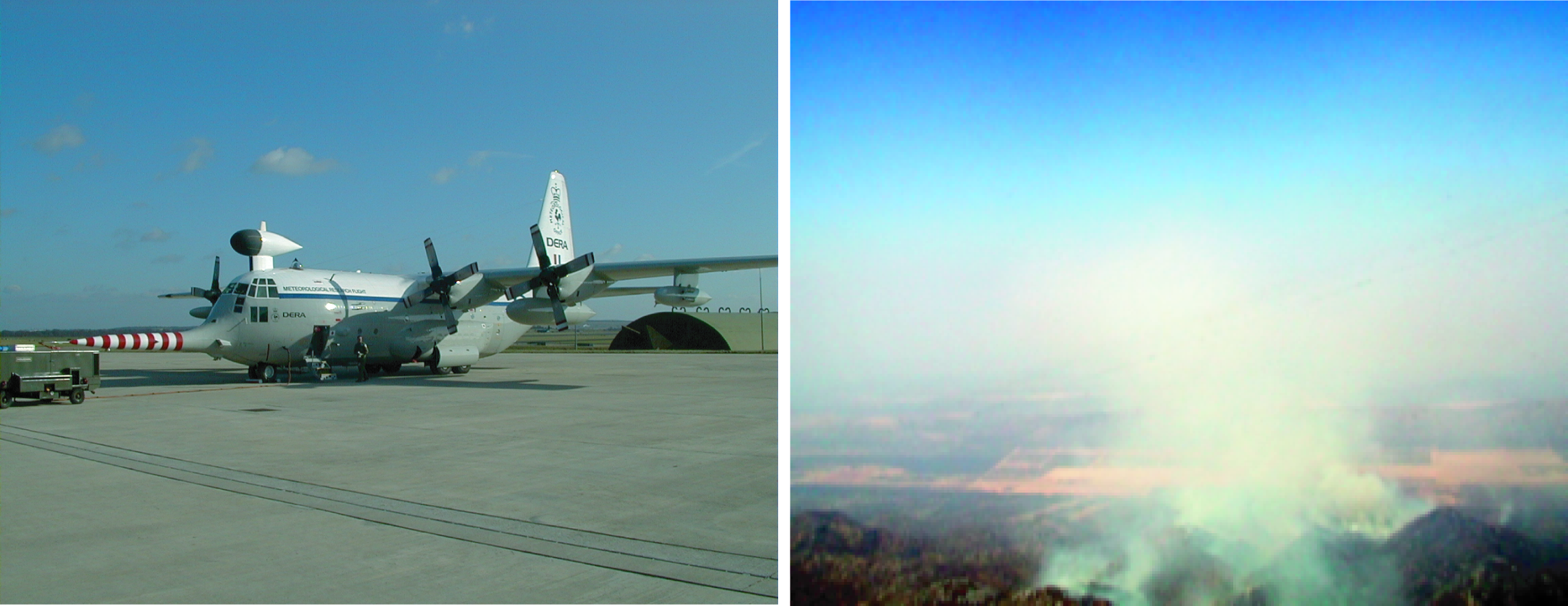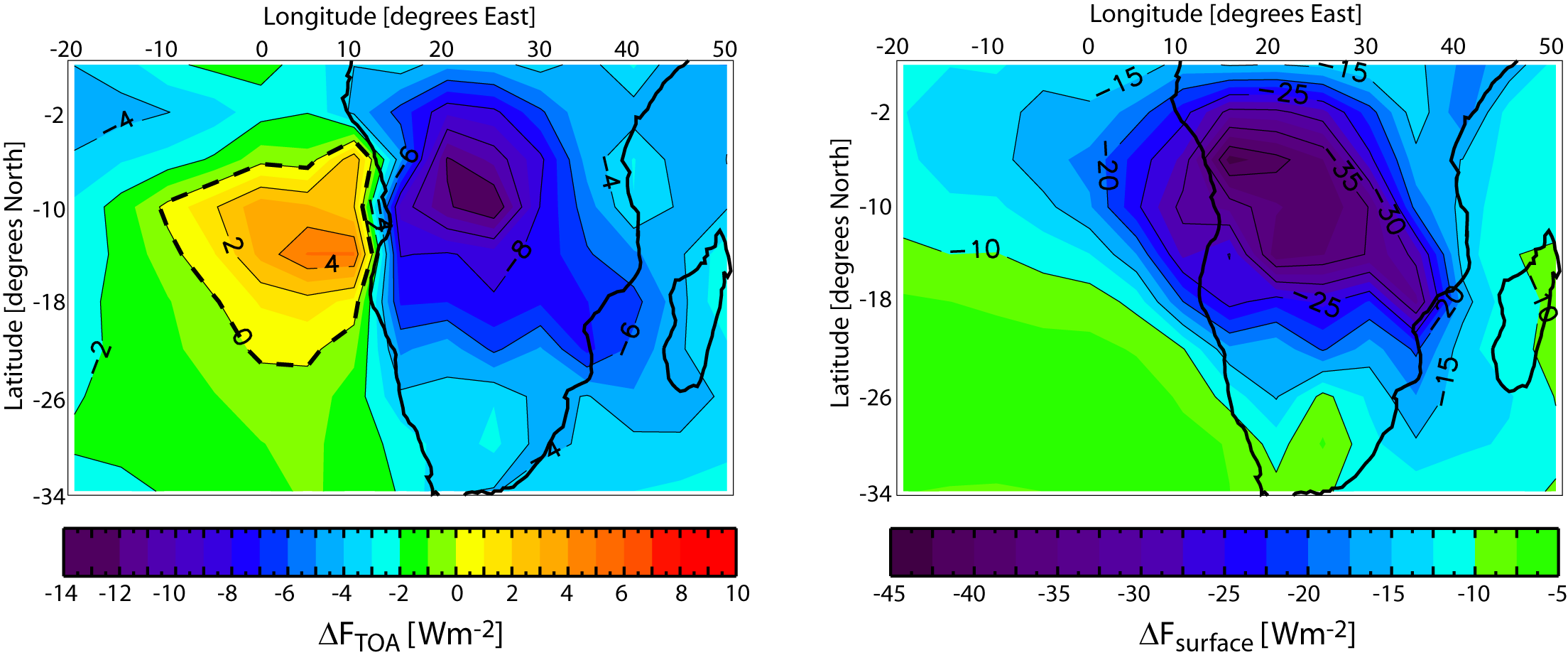AEROSOL GROUP
Biomass Burning
Biomass burning, both natural and human-induced, produces a complex cocktail of aerosol particles including soot, soluble organic compounds, sulphates and nitrates. Due to the high soot content, some of this aerosol can be significantly absorbing. This is important since the aerosol that absorbs solar radiation can produce a positive radiative forcing, tending to warm the surface of the Earth. The in-situ absorption of solar radiation can also heat the atmospheric column and alter things like the mixing, relative humidity and cloud formation.Steven Abel has been doing a PhD on this subject. His work is summarised here.
"Constraining the radiative effect of biomass burning aerosol over Southern Africa"
Biomass burning has been recognised as a significant contributor to the burden of atmospheric aerosols in continental tropical regions, and the corresponding radiative impacts are often much more dramatic than that from greenhouse gases on local and regional scales. However, quantifying the impact of both natural and anthropogenic emissions of biomass burning aerosols on the climate system is problematic, due to the complexity in the aerosols chemical, physical, and optical properties, their spatial variability in the atmosphere, and characterising their interaction with clouds. We have worked with the Met Research Flight to examine the radiative properties and direct effect of biomass burning aerosols over the southern African region, placing an emphasis on measurements taken during the SAFARI 2000 field campaign that took place in September 2000, when copious quantities of biomass burning aerosols from anthropogenic activities were present in the atmosphere (see Fig. 1).

Fig. 1: MODIS satellite retrieval of aerosol optical depth for September. Also indicated are the approximate locations of several major aerosol field campaigns.
Measurements taken onboard the Met Office C-130 aircraft during SAFARI 2000 over and downwind of a large anthropogenic fire (Fig. 2) show the aerosol single scattering albedo (a measure of the ratio of scattering to extinction of solar radiation) to rapidly increase in the first few hours subsequent to emission. This maybe influenced by the change in black carbon morphology with age, although condensation of scattering material from the gas phase is likely to be the dominant mechanism. This work has been published in Geophysical Research Letters Abel et al. (2003).

Fig. 2: Photographs of the Met Office C-130 aircraft and of a biomass burning episode in Namibia, where measurements of the aerosol over and downwind of the source were taken. Photographs are courtesy of the Met. Office
Biomass burning aerosols were observed to exist in elevated layers above low-level stratocumulus clouds as the smoke is advected off the coast of southern Africa. The absorption properties of the aerosol can lead to significant low biases in the MODIS satellite retrieval of cloud optical depth and droplet size. Figure 3 shows spatial distributions of the low bias in droplet size that are correlated with biomass burning aerosols as identified by the TOMS satellite. This work has been published in the Quarterly Journal of the Royal Met. Soc. Haywood et al. (2004). This effect should be borne in mind when attempting to evaluate the indirect aerosol effect from satellite based remote sensing.

Fig. 3: a) Quick look image of a MODIS data granule off the coast of Namibia on 10/09/2000; b) Biomass burning aerosol identified by TOMS AI; c) low bias in the MODIS retrieval of cloud droplet size.
Satellite and in situ measurements of clouds, aerosols, and land surface albedo, were used to place constraints on the direct radiative effect of biomass burning aerosols over the southern African region during September. Figure 4 shows that the majority of the radiative forcing at the top of the atmosphere is negative, although an area of positive radiative forcing exists where the partially absorbing smoke overlies cloud. The scattering and absorption of solar radiation by the aerosol leads to a large negative surface radiative forcing over the southern African continent, which may act to weaken the hydrological cycle and alter atmospheric circulation patterns across the region. Sensitivity studies were performed to identify the important parameters that need to be targeted by future observations and well represented in climate models in order to reduce the current uncertainties in the direct radiative effect of biomass burning aerosols. This work has been submitted to Atmospheric Chemistry and Physics Discussions.

Fig. 4: The monthly mean direct radiative effect of biomass burning aerosols over the southern Africa region during September at the top of the atmosphere